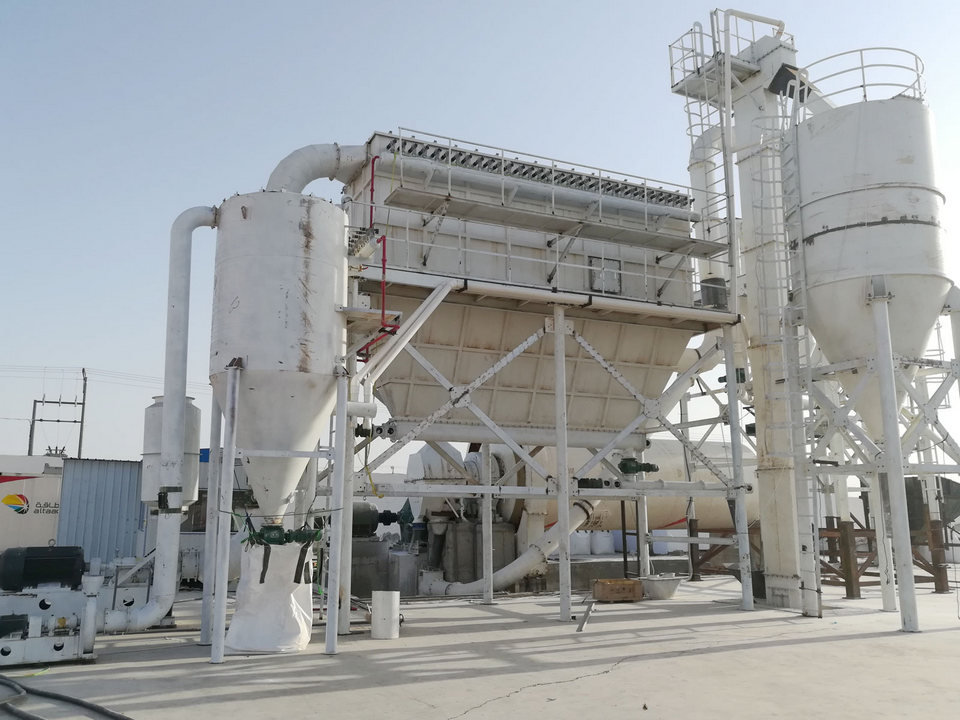Factors affecting the adsorption of pulse dust collector
As the filtration time increases, more and more dust accumulates on the filter bag of the pulse dust collector, and the resistance of the filter bag increases, resulting in a gradual decrease in the processing air volume. In order for the pulse dust collector to work normally and control the resistance within a certain range, the filter bag must be cleaned. When cleaning dust, the pulse controller triggers the control valves in sequence, opens the pulse valve, and the compressed air in the air bag instantaneously sprays out into the filter bag through the pulse valve to the holes of the injection pipe. The dust attached to the surface of the filter bag falls off.
When the pulse bag filter is working normally, dust-laden gas enters the ash hopper from the air inlet. Due to the rapid expansion of the gas volume, some of the coarser dust particles fall into the ash hopper due to inertia or natural settlement, and most of the remaining dust particles follow. The airflow rises into the bag chamber. After being filtered by the filter bag, the dust particles are retained on the outside of the filter bag. The purified gas enters the upper box from the inside of the filter bag, and then is discharged into the atmosphere through the valve plate hole and the exhaust port. The purpose of dust removal.

As the filtration continues, the resistance of the dust collector also rises. When the resistance reaches a certain value, the ash cleaning controller issues a ash cleaning command. First, the lift valve plate is closed to cut off the filtered air flow; then, the ash cleaning controller pulses The solenoid valve sends out a signal, and as the pulse valve sends the high-pressure reverse airflow used for dust removal into the bag, the filter bag swells rapidly and produces strong shaking, which causes the dust on the outside of the filter bag to shake off and achieve the purpose of dust removal. Since the equipment is divided into several box areas, the above process is carried out on a box-by-box basis. When one box area is cleaning dust, the rest of the box areas are still working normally, ensuring the continuous and normal operation of the equipment. The key to the ability to handle high-concentration dust is that this strong cleaning method requires extremely short cleaning time.
The factors that affect the adsorption of the pulse dust collector are the nature of the adsorbent and the operating conditions. Only by understanding the factors that affect adsorption, can we choose suitable adsorbents and suitable operating conditions, so as to better complete the task of adsorption and separation.
1. Under normal circumstances, low-temperature operation is conducive to physical adsorption, and a proper increase in temperature is conducive to chemical adsorption. However, whether to raise or lower the temperature must be based on the adsorption melting during the adsorption process. If the melting becomes a positive value, increasing the temperature is beneficial to the adsorption operation; otherwise, lowering the temperature is beneficial to the adsorption process. The influence of temperature on gas phase adsorption is greater than that on liquid phase adsorption. For gas adsorption, pressure increase is conducive to adsorption, and pressure decrease is conducive to desorption.
2. The properties of the adsorbent, such as porosity, pore size, particle size, etc., affect the specific surface area, thereby affecting the adsorption effect. Generally speaking, the smaller the particle size of the adsorbent or the more developed the micropores, the greater the specific surface area and the greater the adsorption capacity. However, in the liquid phase adsorption process, the surface area provided by the micropores does not have a significant effect on the adsorbate with a large relative molecular mass.
3. The nature and concentration of the adsorbate have a certain influence on the gas phase adsorption. The equivalent diameter, relative molecular weight, boiling point and saturation of the adsorbate affect the adsorption capacity. If the same kind of activated carbon is used as an adsorbent, for organic substances with similar structures, the greater the relative molecular mass and unsaturation, the higher the boiling point, and the easier it is to be adsorbed. For liquid phase adsorption, the molecular polarity of the adsorbate, relative molecular weight, and solubility in the solvent affect the adsorption capacity. The greater the relative molecular mass, the stronger the polarity of the molecule, the lower the solubility, and the easier it is to be adsorbed. The higher the adsorbate concentration, the lower the adsorption capacity.
4. The activity of an adsorbent is an indicator of the adsorption capacity of the adsorbent, and it is often expressed as a percentage of the ratio of the mass of adsorption on the adsorbent to the total amount of adsorbent. Its physical meaning is the adsorption mass that can be absorbed by a unit of adsorbent.
5. Ensure that the adsorbent and the adsorbent have a certain contact time, so that the adsorption is close to equilibrium, and make full use of the adsorption capacity of the adsorbent. The time required for adsorption equilibrium depends on the adsorption rate, and the contact time is generally determined through economic trade-offs.
The performance of the adsorber of the pulse dust collector has a significant influence on the adsorption effect. The structure of the adsorber and the laying of the adsorption layer should be designed reasonably to ensure that the adsorber exerts its excellent adsorption performance.
